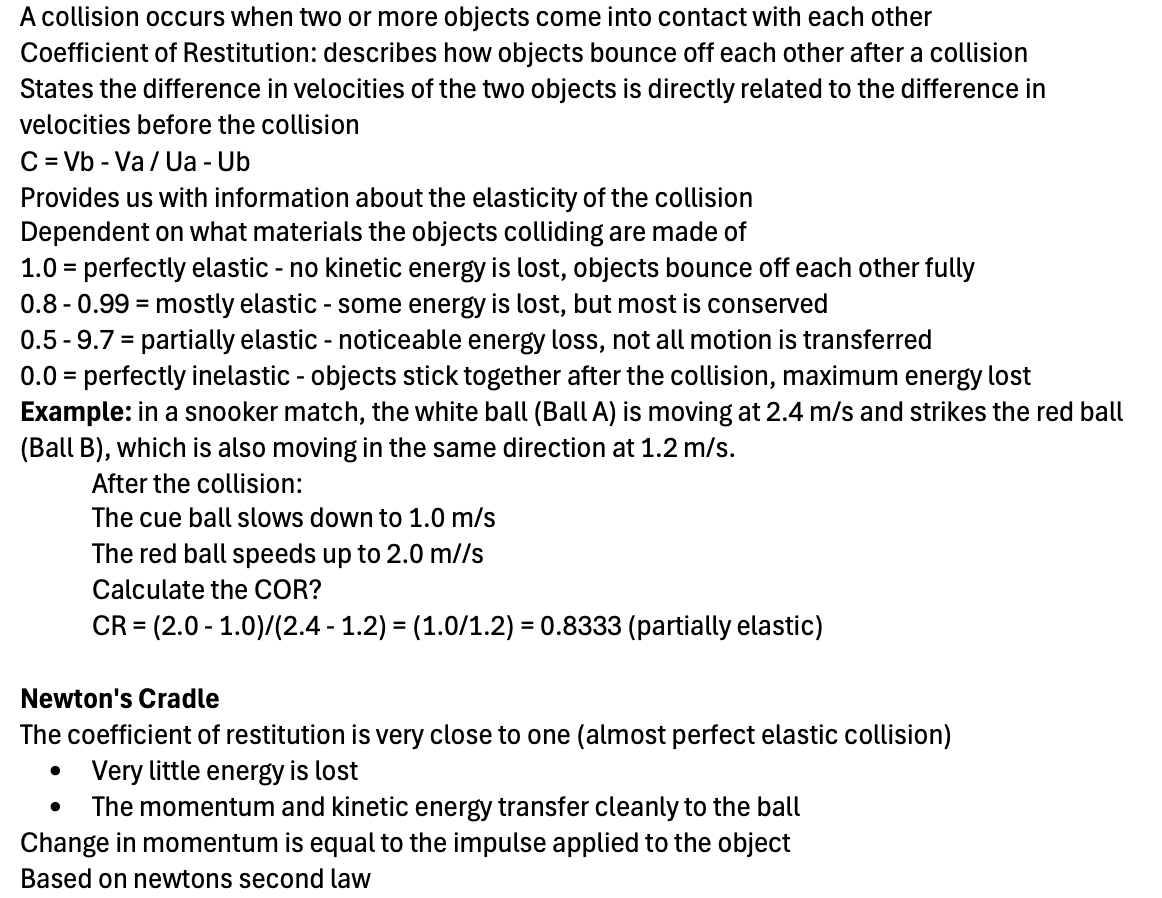Collisions
A collision occurs when two or more objects come into contact with each other
Coefficient of Restitution: describes how objects bounce off each other after a collision
States the difference in velocities of the two objects is directly related to the difference in velocities before the collision
C = Vb - Va / Ua - Ub
Provides us with information about the elasticity of the collision
Dependent on what materials the objects colliding are made of
1.0 = perfectly elastic - no kinetic energy is lost, objects bounce off each other fully
0.8 - 0.99 = mostly elastic - some energy is lost, but most is conserved
0.5 - 9.7 = partially elastic - noticeable energy loss, not all motion is transferred
0.0 = perfectly inelastic - objects stick together after the collision, maximum energy lost
Example: in a snooker match, the white ball (Ball A) is moving at 2.4 m/s and strikes the red ball (Ball B), which is also moving in the same direction at 1.2 m/s.
After the collision:
The cue ball slows down to 1.0 m/s
The red ball speeds up to 2.0 m//s
Calculate the COR?
CR = (2.0 - 1.0)/(2.4 - 1.2) = (1.0/1.2) = 0.8333 (partially elastic)
Newton's Cradle
The coefficient of restitution is very close to one (almost perfect elastic collision)
Very little energy is lost
The momentum and kinetic energy transfer cleanly to the ball
Change in momentum is equal to the impulse applied to the object
Based on newtons second law
